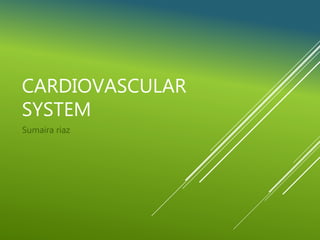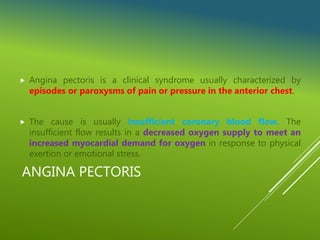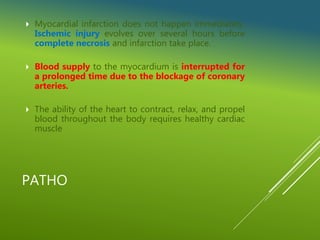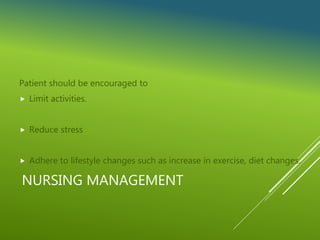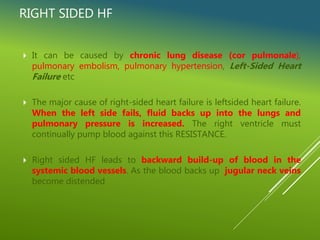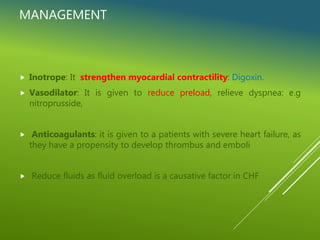This document provides information on the cardiovascular system and coronary artery disease. It discusses the pathophysiology of coronary artery disease where plaque builds up in the arteries leading to stenosis and reduced blood flow. This can cause chest pain called angina due to ischemia. The document outlines the symptoms, diagnosis, and management of coronary artery disease including medications, lifestyle changes, and possible surgical interventions. It also discusses related conditions like angina pectoris, myocardial infarction, and heart failure.
